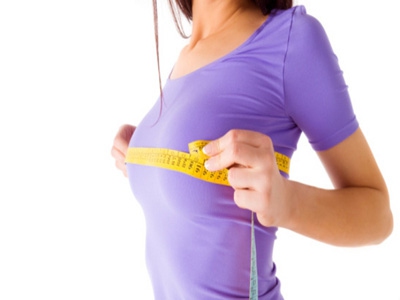Your breasts, just like your vagina, will go through various changes as you get older. There will be changes in the way your breasts feel, as well as their appearance, so it’s important to be aware of what’s happening. Here, we’ve outlined what to look out for over the next few years.

Do Breasts Get Bigger with Age?
The nipple and the basis of the milk duct system are already formed by the time you are born. When you reach puberty, estrogen production and secretion in the ovaries begins. This stimulates the accumulation of fat within the breasts’ connective tissues, which causes them to grow and alter their appearance. The first visible changes are usually raised nipples, darkening of the skin surrounding the nipple (the areola), and some swelling in the breast. Breasts are fully grown by the time you reach adulthood. However, many women notice breast changes after puberty and wonder, ‘Do breasts get bigger with age?’
You breasts grow larger in puberty through adulthood and it is getting larger as you age till you get in your 20s. The collagen providing the structure of the breasts may start to give way and the elasticity of the breast tissue can begin to decline. In general, the breasts become less dense as you get older. However, this does make mammograms easier as the reduced density enables doctors to better see any abnormalities within the breasts.
In your 20s, weight fluctuations are common. You will be settling into your adult weight and your metabolism will be slowing down. With variations in weight come changes in breast size, so it’s important to regularly measure your bra size. In addition, many women become pregnant in their 20s; with pregnancy, breasts increase in size and prepare for lactation. Once the baby is born and breastfeeding has finished, a lot of women notice that their breasts have increased or decreased in size, compared with how they were before pregnancy. Pregnant women may also notice that they develop larger nipples and darker areolas, although these changes tend to reverse after pregnancy.
Breast Changes with Age and Hormones
Whether breast getting bigger with age or smaller with age depends on several factors.
The tissues and structure within your breasts begin to change as you get older, due to age-associated shifts in the levels of reproductive hormones. These changes lead to a reduction in the fullness and firmness of the breasts. In addition, although abnormal growths in the breasts, such as fibroids and cysts, can occur at any age after puberty, the incidence tends to increase in older women.
If you’ve been pregnant, the associated weight gain and subsequent weight loss can cause the skin of your breasts to become stretched. This can result in the appearance of stretch marks or drooping of the breasts, known as ptosis.
In your 40s, your ovaries start to produce less estrogen as a result of premenopause. This causes the breasts to go through a process termed involution, where soft fat replaces the denser breast tissue, so the breasts don’t feel as firm as they used to. Involution happens at various rates in different parts of the breast, therefore one area of the breast may feel softer, with the adjacent area seeming like a lump in comparison. To monitor how your breasts are changing, it’s essential to conduct regular breast examinations. Soft lumps (like the side of your nose) are likely to be benign, but if the lumps feel firm (like the bridge of your nose), they will need to be evaluated by a healthcare professional.
However, if you are worried about a breast lump, make an appointment to see your doctor as soon as possible.
Preventing Age-Associated Changes in the Breasts
There is no proven method for preventing natural age-associated changes in the breasts. However, taking hormone replacement therapy, applying creams and lotions to strengthen skin elasticity, practicing breast stimulation such as breast message, as well as limiting the number of children you have may delay breast aging. Over-the-counter creams, oils and lotions that contain collagen may help as collagen helps the skin become more elastic. In addition, many women use cocoa butter to reduce the appearance of stretch marks.
What If My Breasts Grow in My 30s or 40s?
Some women in their 30 and 40s may notice their breast getting bigger with age without any obvious reason for doing so such as breast stimulation. If this concerns you, make an appointment with your doctor to get your breasts checked out. If growth is approximately the same in both breasts, it is likely to be a benign condition. However, changes in hormone levels, occurring either naturally, through medications, including the contraceptive pill, or conditions such as polycystic ovary syndrome, can affect your breast size. If you suspect a hormonal issue, your doctor can arrange for you to see an endocrinologist.
Modifications to your diet and exercise regime may also affect your breasts. It’s worth measuring your breasts regularly to see whether the growth and increase in size persists over time. Of course, if you suspect you may be pregnant, make sure you take a pregnancy test as soon as you can.

View All Comments /Add Comment